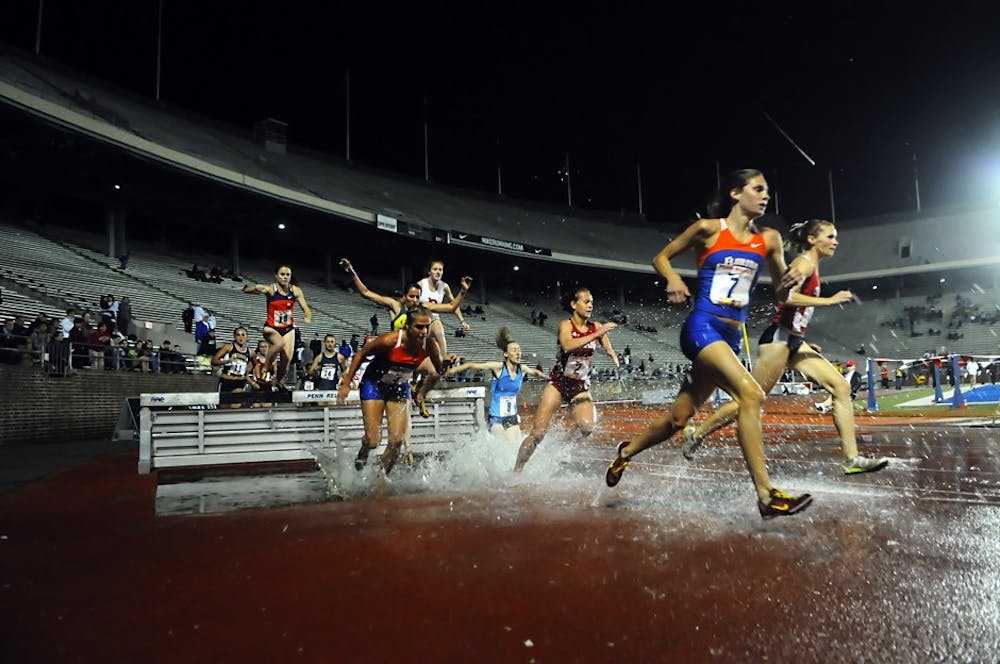
No event in track and field captures the spectator’s attention quite like the steeplechase.
A soaking spectacle, the fading, beleaguered steeplechaser draws shouts of encouragement and muffled snickers from sympathetic onlookers.
Yet the event is seldom understood by those suppressing their laughs. In fact, collegiate steeplechasing cannot be understood without appreciating its physical and mental demands.
The collegiate steeplechase is slightly over seven laps — for both men and women — or 3,000 meters (just under two miles). Each runner must clear four barriers per lap. These barriers are three feet for men and 2.5 feet for women.
Now add the water jump — a fifth barrier just like the rest, except that beyond it is a large pit full of water.
Understandably, a pack of runners fatigued by water-logged shoes and charging at fairly high speeds toward a three-foot tall wooden barrier can create havoc, especially when a dive into a pool of water awaits.
Penn’s top steeplechaser, Phil Cawkwell, noted the importance of athleticism to his success but explained that “the biggest challenge in the race is maintaining a good rhythm.”
“With four barriers and the water pit every lap, it’s tough to maintain a constant pace, so you have to be able to adjust to changes in pace,” he said.
In the name of efficiency, most runners hurdle the ordinary barriers, but try to plant a foot on the water-barrier and use it to propel them as far toward the other side of the water pit as possible. Even the best runners get wet — and the worst often need a towel.
But, says Cawkwell, “the half-second after you’ve pushed off the water barrier and are floating above the water pit is breathtaking.”
Breathtaking it is — for spectators as well. Having trained not only as distance runners, but also as hurdlers, the best steeplechasers glide over their ordinary barriers and make the leap over the water pit seem effortless.
The men’s world record is an astounding 7:53.63; the women’s 8:58.81. In 2000, Sean MacMillan set Penn’s more modest, though still impressive, record of 8:40.29.
To put this in perspective, few high-school runners can run three kilometers in 8:40, and fewer collegiate runners can cover that distance in 7:53, even on flat land.
Beginning at 7:30 p.m. tonight , Penn will give collegiate and professional runners a chance to race this taxing event at Franklin Field.
Cawkwell’s fastest time, 9:10, came a year ago at the Relays, but, recovering from an injury, he will miss his last opportunity to run at the Carnival. Given the event’s difficulty, few Quakers run it, and only two — Mike Kiley and Laura Steel — will compete in it this weekend.
The Daily Pennsylvanian is an independent, student-run newspaper. Please consider making a donation to support the coverage that shapes the University. Your generosity ensures a future of strong journalism at Penn.
DonatePlease note All comments are eligible for publication in The Daily Pennsylvanian.





